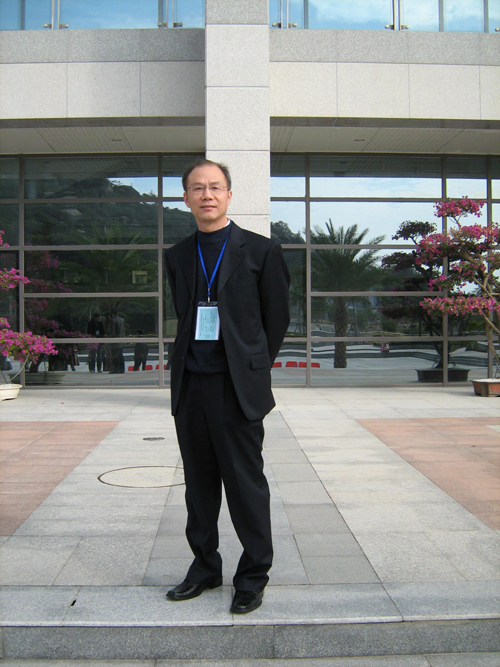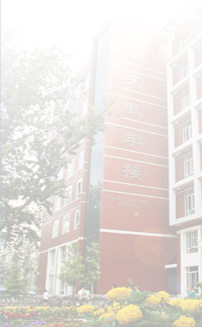
Tianlan, Zhang: Ph.D., Professor
Tel: +86-10-82801539
E-mail: tlzhang@bjmu.edu.cn
Address: Department of Chemical Biology, School of Pharmaceutical Sciences,Peking University, Beijing 100191, China
Education
Sept.1978-July 1982, B.Sc. in Chemistry, South China Institute of Technology, Guangzhou, China.
Sept.1984-July 1987, M.Sc. in Inorganic Chemistry, Henan Institute of Chemistry/Zhengzhou University, Zhengzhou, China.
Sept.1996-July 1999, Ph.D. in Medicinal Chemistry, Beijing Medical University, Beijing, China.
Professional Background
Aug.1987-Aug.1996 Research Assistant, Research Associate (1987) and Associate Professor (1995), Laboratory of Coordination Chemistry, Henan Institute of Chemistry, Zhengzhou, China. He studied the photochemistry of coordination compounds and the electrochemistry of excited states. During this period, he studied biochemistry at the Centre for Photomolecular Sciences, Imperial College, London, UK from Sept.1994 to Sept.1995.
Aug.1999-Present Associate Professor and Professor (2004), Peking University School of Pharmaceutical Sciences, Beijing, China. During this period, he transferred to Capital Medical University (Beijing) and stayed there from May 2005 to Jan.2008.
Teaching
Current teaching includes a second year undergraduate lecture course on Inorganic Chemistry and a postgraduate lecture course on Bioinorganic Solid-state Chemistry.
Research Interests
Our researches focus on biological inorganic chemistry and inorganic medicinal chemistry. In the first area we currently investigate, at both molecular and cellular levels, the structure and transformation of calcium phosphate minerals under the influence of some matrix proteins, and endogenous and exogenous metal ions. Since calcium phosphate minerals are present in bone, teeth, and even atherosclerotic lesions, it is important to examine if any precursor mineral phase is involved in calcifying nodule (as an in vitro cellular model) development and, if so, to gain an insight into the way these metals and proteins influence the nodules' mineral phases. In the second area, work is going on the roles of p38 MAPK signaling pathway and mitochondrial transmembrane potential in the leukemia cell differentiation induced by realgar (arsenic sulfide As4S4) nanoparticles.
Representative Publications
- Bao-Di Gou*, Sha Bian, Tian-Lan Zhang and Kui Wang*. Gadolinium-promoted precipitation of calcium phosphate is associated with profibrotic activation of RAW 264.7 macrophages. Toxicology in Vitro, 2010; 24, 1743-1749.
- Chen-Guang Wang, Jia-Wang Liao, Bao-Di Gou, Jian Huang, Rui-Kang Tang,* Jin-Hui Tao, Tian-Lan Zhang,* and Kui Wang.* Crystallization at multiple sites inside particles of amorphous calcium phosphate. Cryst. Growth Des. 2009; 9, 2620-2626.
- Yan-Ling Shi, Li-Wen Wang, Jian Huang, Bao-Di Gou*, Tian-Lan Zhang, and Kui Wang*. Lanthanum suppresses osteoblastic differentiation via pertussis toxin-sensitive G protein signaling in rat vascular smooth muscle cells. J. Cell. Biochem. 2009; 108, 1184–1191.
- Li-Wen Wang, Yan-Ling Shi, Nan Wang, Bao-Di Gou, Tian-Lan Zhang*, Kui Wang*. Association of oxidative stress with realgar-induced differentiation in human leukemia HL-60 cells. Chemotherapy 2009; 55, 460–467.
- Yu Shi,Bao-Di Gou*,Yan-Ling Shi,Tian-Lan Zhang*,Kui Wang. Lanthanum chloride suppresses hydrogen peroxide-enhanced calcification in rat calcifying vascular cells. Biometals 2009; 22, 317-327.
- Jian Huang, Xi Wang, Tian-Lan Zhang*, Kui Wang*. Alterations of ovariectomized rat bone and impact of non-collagenous proteins on mineralization. Joint Bone Spine 2009; 76, 176-183.
- Xi Wang, Lan Yuan, Jian Huang,* Tian-Lan Zhang,* Kui Wang. Lanthanum enhances in vitro osteoblast differentiation via pertussis toxin-sensitive Gi protein and ERK signaling pathway. J. Cell. Biochem. 2008; 105, 1307–1315.
- Nan Wang, Li-Wen Wang, Bao-Di Gou*, Tian-Lan Zhang*, Kui Wang. Realgar-induced differentiation is associated with MAPK pathways in HL-60 cells. Cell Biol. Int. 2008; 32, 1497–1505.
- Hai-Tao Ding, Chen-Guang Wang, Tian-Lan Zhang*, Kui Wang*. Fibronectin enhances in vitro vascular calcification by promoting osteoblastic differentiation of vascular smooth muscle cells via ERK pathway. J. Cell. Biochem. 2006; 99, 1343-1352.
- Li-Yun Luo, Jian Huang, Bao-Di Gou, Tian-Lan Zhang*, Kui Wang. Induction of human promyelocytic leukemia HL-60 cell differentiation into monocytes by arsenic sulphide: involvement of serine/threonine protein phosphatases. Leuk. Res. 2006; 30, 1399-1405.
- He-Ping Wang, Xiao-Jing Feng, Bao-Di Gou, Tian-Lan Zhang, Shan-Jin Xu and Kui Wang. Effects of LDL, cholesterol and their oxidized forms on the precipitation kinetics of calcium phosphates. Clin. Chem. 2003; 49, 2027-2036.
- Du, X.-L.; Zhang, T.-L.; Yuan, L.; Zhao, Y.-Y.; Li, R.-C.; Wang, K.; Yan, S. C.; Zhang, L.; Sun, H.-Z.; Qian, Z.-M., Complexation of ytterbium to human transferrin and its uptake by K562 cells. Eur J Biochem 2002, 269, 6082 -6090.
- Tian-Lan Zhang and Dou-Man Jin. A theoretical approach to the leaving ligand problem of photosubstitution reactions of hexacoordinate transition metal mixed-ligand complexes. Indian J. Chem. 2001; 40A, 793-803.
- Tian-Lan Zhang, Yu-Xi Gao, Jing-Fen Lu and Kui Wang. Arsenite, arsenate and vanadate affect human erythrocyte membrane. J. Inorg. Biochem. 2000; 79, 195-203.

